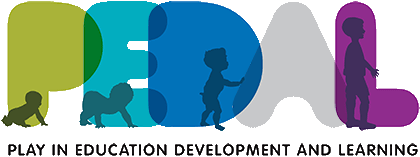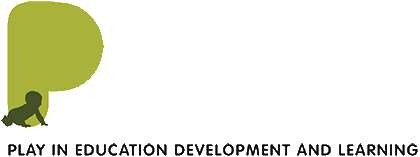Playing together is a great way for children to practice communication and social skills. When children talk about play, they must convey their ideas to others, and practice understanding and responding to others’ ideas. These skills develop throughout childhood. Play is an ideal setting for us to watch them progress.
What is ‘connected communication’?
Imagine two children pretend playing together. Maybe they’re playing with a teddy bear or a plastic dinosaur, maybe they’re role-playing together outside, or maybe they’re acting out a story. In your imagined scenario, were the children talking?
I imagined them playing with a dollhouse. Here’s what they said to each other:
Charlie: The girl’s crying!
Clara: Oh, it’s because she’s hungry!
Charlie: Let’s make her some dinner.
Clara: Ok, she can have her favourite – pizza!
By talking to each other, these children were able to build on their ideas. It was Charlie that suggested the baby was crying, but it was Clara who suggested the reason. When children do this, we call it “connectedness” because each statement is connected to the previous one. It seems quite simple to achieve, but let’s think about an alternative scenario:
Charlie: The girl’s crying!
Clara: The boy wants to eat pizza.
In this scenario, Clara’s statement wasn’t at all related to Charlie’s, and this disconnection effectively ended their interaction. Sometimes children’s ideas don’t match up, and when this happens it can be harder for them to play together and create a story.
We can observe connectedness in any conversation when one person says something that’s related to whatever the previous person said. We engage in connected conversations all the time in our daily lives, but children don’t always find it very easy. This could be because connected communication is linked to how children understand others’ thoughts and feelings (which we call “theory of mind”). When children aren’t able to figure out what their friends are thinking and feeling, it can be more difficult for them to respond in a connected way, causing them to miss out on opportunities to play and build friendships.
Theory of mind is an area that has had a lot of research attention over the last few decades. Beyond connectedness, it’s linked to areas of social development like popularity and social maturity.
In play, having this understanding of others’ thoughts and feelings means a child can figure out what the other child wants and respond appropriately and connectedly. As this happens, the children have more opportunities to practice understanding each other’s thoughts and feelings.
Some children might find this more difficult than others, so adults can help children to practice connected communication by giving them lots of opportunities to play and by modelling connected communication with them. Research suggests that in families where the parents and children practice connectedness together, the children are often more liked by others and have more friendships.
What happens when children connect, but disagree?
In situations like the ones I’ve discussed so far, connectedness has the benefit of allowing the play story to develop – but this type of collaborative talk isn’t the only way talk can be connected. Connected communication can sometimes have a more negative tone:
Charlie: The girl’s crying!
Clara: No, she’s not! She’s eating pizza.
Charlie: She’s not eating pizza!
Clara: She is eating pizza for dinner.
You might have noticed that all of the talk in that scenario was connected (in other words, each child was responding to what the other child said), but these two children struggled to agree. We don’t know much about this type of negative connectedness, but here are a couple of ideas on how and why it might be important:
Even though they were disagreeing, these children showed that they understood each other’s ideas. By practicing talking about their own ideas and listening to each other’s ideas, these children might still be learning from the play.
These children had the chance to negotiate and practice resolving a conflict. If they resolve the conflict, they can continue to play together and have more opportunities for connected communication.
This type of connectedness isn’t common in play, and that’s probably because play is generally fun and enjoyable. However, now and again disagreements do happen. If you notice children talking like this, don’t worry! It’s totally normal, especially in younger children. As children grow older, they learn to collaborate more and have fewer disagreements.
How can you support children in using connected communication?
Next time you see children playing, pay attention to their communication. Is their talk connected? Are they building on each other’s ideas? Even disagreements are completely normal and may have their benefits. Their connected communication is what keeps the play going!
If you’re a parent or teacher, try modelling connected communication by responding to children’s statements with connected answers. Children learn from the way their parents and teachers talk to them, so showing them how it’s done can help them learn.
Finally, remember that play is an ideal setting for children to practice engaging in connected communication and develop their communication skills.

Relevant articles
You can read more about connected communication and its role in children’s development using the resources listed below.
- Connected and Autonomy Support in Parent-Child Relationships: Links to Children’s Socioemotional Orientation and Peer Relationships (Clark & Ladd, 2000)
- A Longitudinal Investigation of Siblings’ and Friends’ Features of Connectedness and Interaction Quality During Play (Leach, Howe & DeHart, 2019)
- Theory of Mind in Infants and Young Children: A Review (Slaughter, 2015)
- Young Children’s Understanding of Other People’s Beliefs and Feelings and Their Connected Communication with Friends (Slomkowski & Dunn, 1996)

